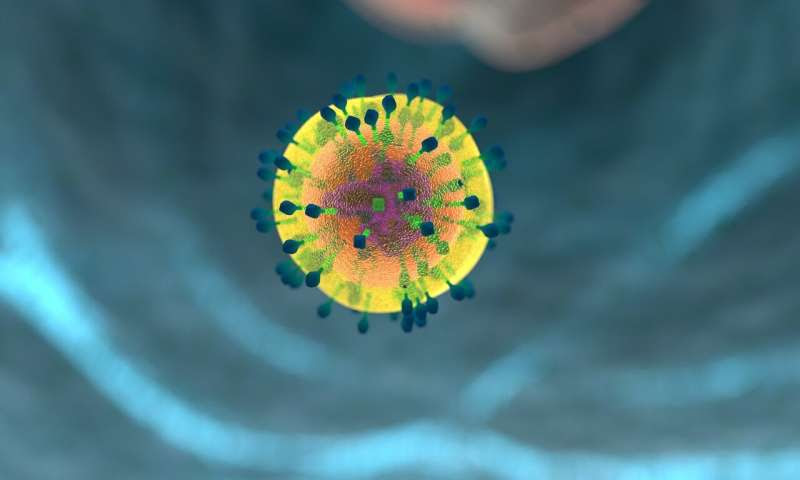by Perelman School of Medicine at the University of Pennsylvania

Credit: CC0 Public Domain
The protein TCF-1 enables various parts of otherwise insulated DNA segments to intermingle in a way that is required for the development of T cells—a key element of the body’s immune system—and the role this protein plays in T cell creation could shed new light on immunotherapy approaches, according to a new study by researchers at the Perelman School of Medicine at the University of Pennsylvania. The findings are published today in Nature Immunology.
Mammalian DNA is folded in 3D structures that create what one can think of as different neighborhoods in the genome. These neighborhoods, formally called topologically associating domains, or TADs, are sections of DNA that are insulated from other neighborhoods in order to control the expression of different genes. Sometimes, these neighborhoods need to intermingle because a piece of DNA in one neighborhood may be required to control and develop a unique set of genes in another.
By studying the mechanics of the protein TCF-1 and how it reconfigures the genome, a research team led by Golnaz Vahedi, Ph.D., an associate professor of Genetics and a member of the Penn Institute for Immunology and Penn Epigenetics Institute, discovered that the TCF-1 protein has a unique ability to enable plasticity in cells across neighborhoods during the development of T cells.
“These domains, or insulated neighborhoods, are like stickers for social distancing,” Vahedi said. “They essentially say, ‘Stay away—keep a certain distance apart.’ But what this protein does is to remove these stickers and say, ‘You can now actually intermingle.’ It disrupts the spatial distancing.”
Using various basic science experiments, the researchers saw that TCF-1, along with the protein CTCF, targets boundaries of insulated neighborhoods when T cells are developing, thereby weakening the insulation and minimizing the distance between these adjacent neighborhoods that were previously blocked off. The co-binding of TCF-1 with CTCF increases interactions across neighborhoods as T cells mature, indicating that TCF-1 plays an essential role in the development and maturation of T cells, which are a central component of immunotherapies that aim to manipulate T cells as drugs to proliferate and kill cancer cells.
“Immune checkpoint inhibitors revive T cells to attack cancer cells. High levels of the TCF-1 protein corresponds to T cell expansion and favorable outcomes after immune checkpoint blockade,” Vahedi said. “Yet it remains a mystery what is unique about TCF-1 expression in this therapeutic strategy. If we understand, in detail, this protein and the other players in the process—the complex of structural proteins that work together with TCF-1 to make this intermingling happen—further manipulations of that machinery that occur in immune checkpoint blockade could hopefully make this intervention even more efficient or effective.”

Leave a Reply